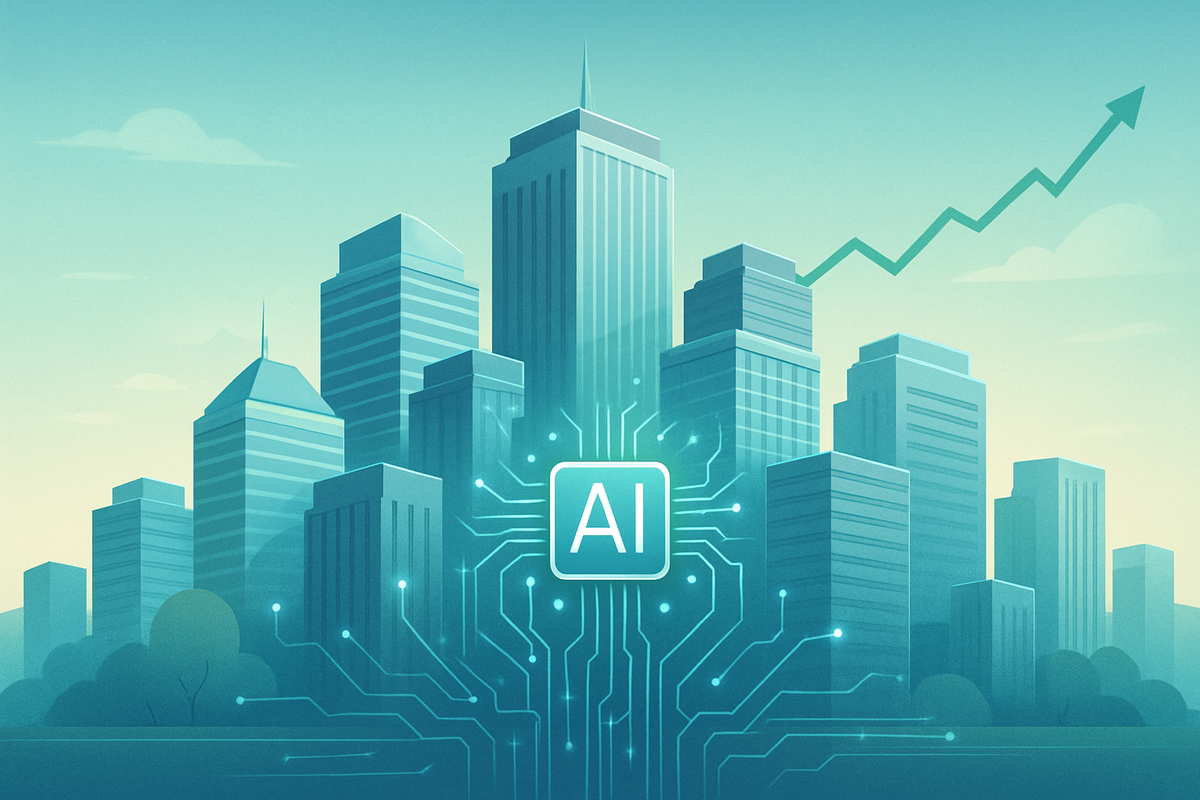Financial News
Goldman Sachs Defies Bubble Fears: "No Stock Market Bubble, Yet" Amidst Market Jitters

As whispers of a looming stock market bubble grow louder, particularly within the high-flying technology and artificial intelligence sectors, global investment bank Goldman Sachs has offered a nuanced counter-narrative: "No Stock Market Bubble, Yet." This perspective, while acknowledging certain "rhymes" with historical speculative periods, posits that fundamental strengths underpin the current market rally, distinguishing it from past irrational exuberance. The pronouncement arrives at a critical juncture, offering a potential calming influence to anxious investors but also sparking debate among those who see alarming parallels to previous market excesses.
This contrarian view from a major financial institution provides a significant point of discussion as market participants grapple with elevated valuations and rapid technological advancements. While many analysts and investors, including prominent figures like Ray Dalio and Paul Tudor Jones, have voiced concerns about frothy conditions, Goldman Sachs' detailed analysis aims to dissect the underlying drivers, suggesting that the current growth is more substance than speculation. However, even within Goldman's ranks, the sentiment is evolving, with recent comments from CEO David Solomon adding layers of complexity to the bank's official stance.
Dissecting the "No Bubble" Thesis: Fundamentals Over Froth
Goldman Sachs' assertion that the market is not yet in a full-blown bubble is anchored in several key arguments that emphasize fundamental strength over speculative fervor. The firm contends that the current rally, particularly among leading technology stocks, is primarily fueled by robust earnings growth and strong corporate performance. This contrasts sharply with historical bubbles, such as the dot-com era, where speculative sentiment often outpaced actual company fundamentals.
A cornerstone of Goldman's argument lies in the exceptional financial health of the companies driving the market's ascent. The bank highlights that these leading firms boast unusually strong balance sheets, high profitability, and significant cash generation. For instance, their cash as a percentage of market capitalization is reported to be double that of companies during the internet bubble, with return on equity and average margins nearly twice as high. Furthermore, while valuations are acknowledged as "stretched," Goldman Sachs (NYSE: GS) maintains they are "not yet at levels consistent with historical bubbles." The "Magnificent 7" group of tech stocks, for example, trades at a median forward price-to-earnings (P/E) ratio of 26.8x, which is roughly half the 52x median observed among top tech names at the peak of the dot-com bubble in 2000.
Adding to their reasoning, Goldman Sachs views the market as being in the relatively early stages of a new technology cycle, specifically driven by artificial intelligence (AI). This suggests considerable room for further growth and outperformance, with the AI space currently dominated by established incumbents rather than a proliferation of unproven startups typical of speculative bubbles. The bank also points to a lack of systematic risks commonly associated with bubbles, such as increased private sector leverage or a decline in savings. Instead, they attribute the broader rise in equity and credit market valuations to prevailing conditions of low interest rates, high global savings, and an extended economic cycle.
However, even Goldman Sachs acknowledges that certain elements of current investor behavior and market pricing "rhyme with previous bubbles." These include rising absolute valuations, high market concentration, increased capital intensity, and the emergence of vendor financing. Notably, the bank's CEO, David Solomon, while previously more dismissive of an AI bubble, has recently (as of October 2025) adopted a more cautious tone, acknowledging "excessive exuberance" and predicting an "AI-driven stock market drawdown" within 12 to 24 months, drawing parallels to the Dotcom Bubble due to valuations potentially exceeding sustainable fundamentals. This evolving perspective from a key leader at Goldman Sachs underscores the ongoing debate and the fine line between innovation-driven growth and speculative excess in today's financial markets.
Navigating the AI Frontier: Winners and Losers in Goldman's Market View
Goldman Sachs' "no bubble" thesis, predicated on fundamental growth and robust corporate health, delineates a market where certain companies are poised for continued success, while others may face significant headwinds. This perspective suggests a discerning approach to investment, favoring substance over speculation in the burgeoning AI landscape.
At the forefront of the beneficiaries are the behemoths of the technology sector, often dubbed the "Magnificent 7." Companies such as NVIDIA (NASDAQ: NVDA), Microsoft (NASDAQ: MSFT), Alphabet (NASDAQ: GOOGL), Amazon (NASDAQ: AMZN), Meta (NASDAQ: META), Apple (NASDAQ: AAPL), and Tesla (NASDAQ: TSLA) are seen as prime winners. Their strong fundamentals, consistent earnings growth, formidable balance sheets, and leading positions in the AI infrastructure build-out make them exceptionally well-positioned. Specifically, companies involved in AI infrastructure and semiconductors, like NVIDIA and Broadcom (NASDAQ: AVGO), along with hyperscale cloud service providers, are expected to see sustained demand and growth as the foundational components of AI are developed and deployed. Software and IT services companies that effectively leverage AI to enhance efficiency, customer experience, and automation are also set to thrive.
Conversely, the market outlook becomes more challenging for companies lacking these robust underpinnings. Unproven AI startups, particularly those with speculative valuations and unclear monetization strategies, are identified as vulnerable. Goldman Sachs suggests that capital deployed into such ventures may not deliver adequate returns, echoing a common pitfall of past speculative cycles. Companies across any sector with weak fundamentals, precarious balance sheets, or those engaging in excessive AI investments without a clear path to generating tangible sales and earnings growth could face negative impacts. The increasing competition within the AI landscape also poses a threat; while currently concentrated among a few giants, incumbents failing to innovate and smaller players unable to compete effectively may struggle to maintain relevance.
Furthermore, despite the "no bubble" stance, the cautionary remarks from Goldman Sachs CEO David Solomon regarding a potential "AI-driven stock market drawdown" within 12 to 24 months suggest that even fundamentally sound companies could experience heightened volatility and price corrections. This scenario implies a period where investors might engage in sector rotation, shifting capital from speculative or overvalued AI plays towards more defensive or established sectors. The emphasis remains on companies that can demonstrate real profit growth and tangible business performance, distinguishing them from those whose valuations are primarily driven by future promise alone.
Broader Implications: Navigating Divergent Views and Historical Echoes
Goldman Sachs' "no stock market bubble, yet" perspective, emanating from one of the world's most influential financial institutions, carries significant weight, shaping not only investor sentiment but also potentially influencing competitor strategies, lending practices, and even regulatory considerations. This nuanced view, while acknowledging similarities to past speculative eras, crucially differentiates the present market through an emphasis on fundamental strength.
Within the broader financial industry, Goldman Sachs' stance exists amidst a spectrum of opinions. While Goldman points to robust earnings and strong balance sheets, other major players express more caution. Strategists at Bank of America (NYSE: BAC), for instance, have issued warnings about increasing bubble risks, attributing them to loosened monetary policy and financial deregulation that could amplify retail investor participation—conditions they believe foster "bigger liquidity, bigger volatility, bigger bubble." Similarly, while some at Morgan Stanley (NYSE: MS) see reasons for continued bullishness, others from JPMorgan Chase & Co. (NYSE: JPM) and UBS Group AG (NYSE: UBS) have cautioned about underestimating trade risks. This divergence underscores the complexity of current market analysis, with AI remaining a central focus across all institutions, albeit with varying interpretations of its long-term stability and potential for overheating.
The ripple effects of Goldman Sachs' influential call can be substantial. Should its "no bubble" thesis gain wider acceptance, it could encourage other financial institutions to maintain or even increase their exposure to growth-oriented sectors, particularly technology and AI. This might translate into continued robust lending and investment in AI startups and established tech companies, potentially maintaining aggressive underwriting standards for IPOs. Conversely, if the more cautious warnings, including CEO David Solomon's own prediction of an "AI-driven stock market drawdown" within 12-24 months, gain prominence, it could lead to more conservative lending and investment, with heightened scrutiny on AI-related exposures. For technology companies, Goldman's stance offers a degree of validation for current valuations, but those with high valuations and limited profitability would face immense pressure if a more widespread "bubble" narrative takes hold.
From a regulatory and policy standpoint, Goldman Sachs' assessment could subtly influence decisions. If influential institutions indicate that market growth is fundamentally driven and not purely speculative, it might alleviate immediate pressure on central banks to tighten monetary policy specifically to deflate asset prices. However, if market concentration or certain "vendor financing" practices, identified by Goldman as "rhyming with previous bubbles," become more pronounced, regulators might increase scrutiny on these specific areas. The broader trend of regulatory easing and potential increase in retail investors, as highlighted by Bank of America, could also lead to discussions on reforms aimed at limiting credit growth and diverting bank credit away from speculative activities to ensure financial stability.
Historically, market calls like Goldman's are often viewed through the lens of past bubbles. The firm directly compares the current AI enthusiasm to the Dotcom Bubble of the late 1990s and early 2000s, but differentiates the present by highlighting robust earnings growth and strong balance sheets of leading tech companies, in contrast to the more speculative, less profitable ventures of the Dotcom era. When considering the 2008 Financial Crisis and the housing bubble, Goldman's analysis points to an absence of increased leverage in the private sector and a decline in savings—key features of systemic risk in that period. Lessons from history suggest that the severity of crises following a burst bubble is less linked to the asset type and more to how the bubble was financed, with crises being most severe when accompanied by lending booms and high leverage, especially when financial institutions are directly involved. Goldman Sachs' current assessment emphasizes the absence of these highly leveraged conditions, offering a crucial distinction from these more damaging historical episodes.
The Road Ahead: Navigating Growth, Volatility, and Strategic Shifts
Looking beyond the immediate assessment, Goldman Sachs' perspective on the market's current state sets the stage for a dynamic period characterized by continued growth, heightened volatility, and the necessity for strategic adaptation. As of October 2025, the firm outlines both short-term trajectories and long-term structural shifts that will redefine the investment landscape.
In the short term, extending from October 2025 through late 2026, Goldman Sachs anticipates a continued period of U.S. economic strength, projected to grow by 2.5% in 2025, fueled by anticipated Trump-era policies including increased tariffs and tax cuts. This robust economic backdrop is expected to support further equity market gains, with the S&P 500 Index (INDEXSP: .INX) forecasted to reach 6,500 by the end of 2025 and 6,900 by mid-2026. However, this growth will likely be accompanied by increased market volatility, driven by corporate earnings season, year-end benchmarking, and significant macroeconomic events. The Federal Reserve is also expected to implement two additional 25 basis point rate cuts in 2025, followed by two more in 2026, aiming for a 3.00-3.25% terminal rate amidst a moderating U.S. core PCE inflation and a softening labor market.
Longer-term, beyond 2026, Goldman Sachs identifies several structural economic shifts encapsulated by the acronym "CHANGE": Climate transition, High levels of debt, Ageing demographics, New finance, Global fragmentation, and Evolving technology. These factors are expected to usher in an economic cycle featuring higher inflation, elevated interest rates, and increased macroeconomic volatility. Despite short-term correction concerns, the long-term outlook for U.S. economic acceleration, fueled by government spending and AI infrastructure development, remains optimistic. In this evolving environment, gold is positioned as a critical safe haven, with Goldman Sachs forecasting it to reach $3,700 by the end of 2025 and potentially exceeding $5,000 in a severe stress scenario.
For investors and businesses, strategic pivots will be paramount. Diversification is key, given the current market concentration, especially in tech, and the intensifying competition within the AI space. Portfolios will need to be structured to address the "CHANGE" themes, emphasizing resilience against structural shifts. In the event of market volatility or a correction, a strategic sector rotation from highly valued, speculative AI-related stocks towards more defensive sectors or companies with strong fundamentals and manageable debt might be prudent. Goldman Sachs' 2025 Market Playbook also highlights specific opportunities in alternative asset managers, companies with high floating-rate debt benefiting from anticipated rate cuts, and gold mining stocks as hedges against geopolitical risks. Critically, AI investment is expected to evolve from infrastructure plays to a "Phase 3" focused on application rollout and monetization, favoring companies that can demonstrate tangible AI-enabled revenues.
The path ahead presents both significant opportunities and formidable challenges. Opportunities stem from the projected U.S. economic growth, AI's transformative power (especially in "pick-and-shovel" plays), and attractive valuations in specific European sectors. However, challenges loom large, including high valuations and concentration risk in the S&P 500 (where the top 10 companies comprise 40% of market capitalization), inflationary pressures exacerbated by potential tariffs, persistent geopolitical instability, and the risk of AI overexuberance, as cautioned by CEO Solomon. Ultimately, several scenarios could unfold: a base case of continued global growth with gradual adjustments; a "soft landing" correction driven by AI exuberance; a more severe "Dot-Com 2.0" style bubble burst if speculative excesses are unchecked; or a "geopolitical escalation/confidence crisis" scenario leading to significant market disruption and a surge in safe-haven assets like gold.
Conclusion: A Balanced Outlook Amidst Evolving Market Dynamics
Goldman Sachs' "no stock market bubble, yet" perspective offers a crucial counter-narrative to prevalent market anxieties, framing the current rally, particularly in the technology and AI sectors, as being primarily driven by robust fundamentals rather than irrational speculation. The key takeaway is an emphasis on strong earnings growth, healthy balance sheets of leading companies, and the view that AI represents a long-term revolution still in its early stages, dominated by established incumbents. While acknowledging that valuations are elevated and market concentration is significant, the firm argues these factors have not yet reached the extreme levels characteristic of historical bubbles.
Moving forward, Goldman Sachs anticipates continued solid global and U.S. economic growth through 2025 and beyond, supporting further, albeit moderate, equity market returns. The Federal Reserve is expected to continue its path of gradual interest rate cuts, providing a supportive monetary backdrop. However, the market is also poised for increased volatility, influenced by macroeconomic events and ongoing geopolitical tensions. The lasting impact of Goldman's stance will hinge on the sustained earnings delivery of these dominant AI and digital infrastructure firms and whether the market can indeed broaden beyond its current narrow leadership.
Investors in the coming months, particularly as of October 2025, should vigilantly monitor the earnings growth of key technology and AI companies for any signs of deceleration. The ultimate impact of tariffs on both growth and inflation will be a critical factor, as will the Federal Reserve's precise policy trajectory and the health of the U.S. labor market. Geopolitical developments remain a persistent source of potential market disruption. Furthermore, investors should actively seek diversification, exploring opportunities in small caps and international markets such as Europe and Japan, as the market is expected to broaden beyond its mega-cap tech focus. Finally, the nuanced caution expressed by Goldman Sachs CEO David Solomon regarding "excessive exuberance" in AI and the potential for an "AI-driven stock market drawdown" serves as a powerful reminder that even amidst a fundamentally strong outlook, vigilance and strategic adaptation remain paramount.
This content is intended for informational purposes only and is not financial advice
More News
View More





Quotes delayed at least 20 minutes.
By accessing this page, you agree to the following
Privacy Policy and Terms Of Service.



